
For best results make sure background graphics are enabled.
What is Sickle Cell Disease (SCD)?
Sickle cell Disease is an inherited blood disorder. It affects hemoglobin, a special protein inside our red blood cells. Hemoglobin picks up oxygen from the lungs and carries it to every part of the body. With SCD, the hemoglobin has an abnormal, ‘sickle’ shape, which gives some red blood cells the same, sickle shape. Sickle cells can’t change shape easily, the way normal red blood cells can and so they can get ‘stuck’ in small blood vessels. They also tend to burst apart (or hemolyze). And while normal red blood cells live 90-120 days, sickle cells only last for 10-20 days.
What problems does Sickle Cell Disease cause?
Sickle cell disease causes two main problems:
- Anemia, which means fewer red blood cells in the body than normal. This happens because sickle cells have a short life, and break down easily. The body has a hard time making enough new red blood cells to keep up. Anemia can make your child or teen feel very tired, cranky and with little energy. It can also cause headaches.
- Vaso-occlusive episodes, (or pain crises) which happen when blood vessels get blocked by the sickle shaped red blood cells. These are also called ‘sickle cell crises’. The blockage stops oxygen from getting to that part of the body. This often causes pain in the affected area. If the blockage is in blood vessels in the brain, a child or teen will have symptoms of stroke (for example, weakness on one side of the body). Most often, children and youth have bone pain during a crisis (arms, legs, back or skull). Pain crises can be hard to predict, but may be ‘triggered’ by any of the following:
- an infection
- stress or fatigue
- dehydration (not enough fluids)
- very hot or cold temperatures
Other problems may include infection, hand-foot syndrome, eye disease and acute chest syndrome. Over time, blood vessel blockages and anemia can damage the spleen, brain, eyes, lungs, liver, heart, kidneys, penis, joints, bones or skin.
How is Sickle Cell Disease treated?
Sickle Cell Disease is a life-long condition. It can still cause damage to blood vessels, even without symptoms. New tests can help detect problems before they happen, and early treatment can help to prevent these problems. A check up in our clinic every year (at least!) will help us to detect and prevent problems before they become life threatening. There are effective treatments to reduce symptoms and lower the chance of organ damage.
Staying healthy with Sickle Cell Disease
There are many things children, youth and families can do to reduce pain crises.
Regular medical follow up
It’s important to keep regular appointments with the Hematology clinic. Regular visits with your family doctor or pediatrician are important for:
- general health care
- immunizations
- other health issues not related to Sickle Cell Disease
You can help to prevent infections by:
• Keeping hands clean. For example, wash hands with soap and water or hand sanitizer after using the toilet, changing diapers, blowing your nose and before preparing food.
• Stay up to date on immunizations. Make sure everyone in the family gets a flu vaccine every year.
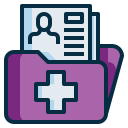
Manage triggers
Know your child’s triggers and try to avoid them. For example, this means making sure your child or teen:
- drinks lots of water to avoid dehydration,
- learns ways to manage stress,
- avoids drinks that contain lots of caffeine,
- gets plenty of sleep,
- washes hands often.

Eat well
Good food gives us energy and helps us fight and recover from infections. A diet that includes lots of fruits and vegetables, water, whole unprocessed foods and home cooking gives everyone the best chance to be healthy.
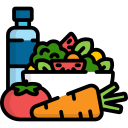
Stay active
Playing outside is the best! Physical activity is fun and helps to:
- strengthen heart and muscles
- improve oxygen use in the body
- prevent constipation
- manage stress
Remember! It’s important to be active, but children and youth with Sickle Cell Disease shouldn’t over-exert themselves. make sure children and youth drink plenty of water, and knows their limits.

Manage pain
Children and youth with Sickle Cell Disease need to take their prescription pain medications as soon as they feel pain. Starting medications early makes pain much easier to manage. Avoiding triggers as will also help to prevent pain.
Get a medical alert bracelet. This will ensure that information about your child or teen’s medical condition is available in case of an emergency.
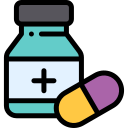
Pain treatment guide
| Under control (score 0) |
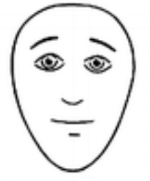 Give usual medications. Give usual medications. |
| Mild (score 1-3) |
|
You may also give ibuprofen by mouth every 6 hours if needed. |
| Moderate (score 4-6) |
|
Your medical team will tell you which of these additional medications to give, depending on your child’s needs:
|
| Severe (score 7-10) |
|
Your medical team will tell you which of these additional medications to give, depending on your child’s needs:
If the pain is not better after 1-2 doses of short-acting morphine or hydromorphone, call the sickle cell nurse case manager. Bring your child or teen to the Emergency Department if pain gets worse even after short-acting morphine or hydromorphone. |
When to come to the Emergency Department
Come to the Emergency Department if your child or teen has any of the following:
- a fever of 38.5°C or higher by mouth (or 38°C or higher under the arm),
- abdominal swelling (check the belly to feel if the spleen feels larger, as we taught you in clinic),
- chest pain,
- difficulty breathing,
- extreme tiredness,
- unusual, severe headache,
- any sudden weakness or loss of feeling,
- pain that will not go away with home treatment,
- a painful erection (priapism),
- sudden change in vision.
Numbers to know
Hematology/Medical Day unit is open weekdays: 8:00 am-4:30 pm 613-737-7600 ext 2470. If you can’t make your appointment, please call to reschedule.
- To speak with the Sickle Cell nurse: 613-737-7600 extension 3390.
- To speak with social worker: 613-737-7600 extension 3511.
- For urgent needs during evenings or weekends, call the Hematologist/Oncologist on call: 613-737-7600, then press 0. Ask the operator to page Hematologist/Oncologist on call.





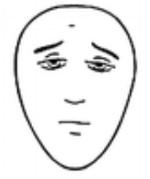 Give usual medications.
Give usual medications. Give usual medications.
Give usual medications. Give usual medications.
Give usual medications.